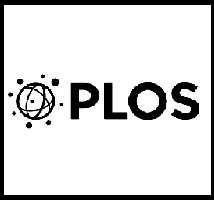Abstract
Despite the enthusiasm for bioengineering of functional renal tissues for transplantation, many obstacles remain before the potential of this technology can be realized in a clinical setting. Viable tissue engineering strategies for the kidney require identification of the necessary cell populations, efficient scaffolds, and the 3D culture conditions to develop and support the unique architecture and physiological function of this vital organ. Our studies have previously demonstrated that decellularized sections of rhesus monkey kidneys of all age groups provide a natural extracellular matrix (ECM) with sufficient structural properties with spatial and organizational influences on human embryonic stem cell (hESC) migration and differentiation. To further explore the use of decellularized natural kidney scaffolds for renal tissue engineering, pluripotent hESC were seeded in whole- or on sections of kidney ECM and cell migration and phenotype compared with the established differentiation assays for hESC. Results of qPCR and immunohistochemical analyses demonstrated upregulation of renal lineage markers when hESC were cultured in decellularized scaffolds without cytokine or growth factor stimulation, suggesting a role for the ECM in directing renal lineage differentiation. hESC were also differentiated with growth factors and compared when seeded on renal ECM or a new biologically inert polysaccharide scaffold for further maturation. Renal lineage markers were progressively upregulated over time on both scaffolds and hESC were shown to express signature genes of renal progenitor, proximal tubule, endothelial, and collecting duct populations. These findings suggest that natural scaffolds enhance expression of renal lineage markers particularly when compared to embryoid body culture. The results of these studies show the capabilities of a novel polysaccharide scaffold to aid in defining a protocol for renal progenitor differentiation from hESC, and advance the promise of tissue engineering as a source of functional kidney tissue.
Introduction
The expanding field of tissue engineering provides hope for the creation of tissue and organs with functional properties and therapeutic potential for nearly every tissue of the human body. Initial engineering strategies have been successful, particularly for tubular structures such as blood vessels [1, 2], urinary bladder [3], larynx [4], and trachea [5]. The clinical need for functional tissue replacements is urgent for patients on the organ transplant waiting list and is particularly critical for patients waiting for a kidney; individuals in need of a kidney represent >80% of all patients on the waiting list (http://optn.transplant.hrsa.gov). It is notable that the kidney which is in greatest demand is also one of the most challenging tissues to engineer due to complex architecture, a spectrum of cell phenotypes, multiple functions, and a lack of an established stem/progenitor cell population in adults from which the kidney can be regenerated. Viable tissue engineering strategies for the kidney requires identification of necessary cell populations, suitable scaffolds to provide structural support and spatiotemporal organizational properties, as well as medium/growth factor/culture combinations to sustain growth and physiological function of the engineered tissue.
Discussion
Many obstacles remain before bioengineering of functional renal tissues for human transplantation can be realized. Primary hurdles include selection of suitable scaffolds to support development and maintenance of the multitude of cell types in the kidney, and the identification of appropriate stem and/or progenitor cell populations with which to recellularize and ensure both structural and functional capacity that is needed. These studies were conducted to explore the use of biologic scaffolds such as renal ECM and to compare with physiologically inert PSS that does not provide biochemical cues or the structural features of the native ECM template. Results have also refined decellularization conditions for rhesus monkey kidneys, and demonstrated that the scaffolds improve upregulation of early renal lineage markers compared with embryoid body differentiation protocols.








